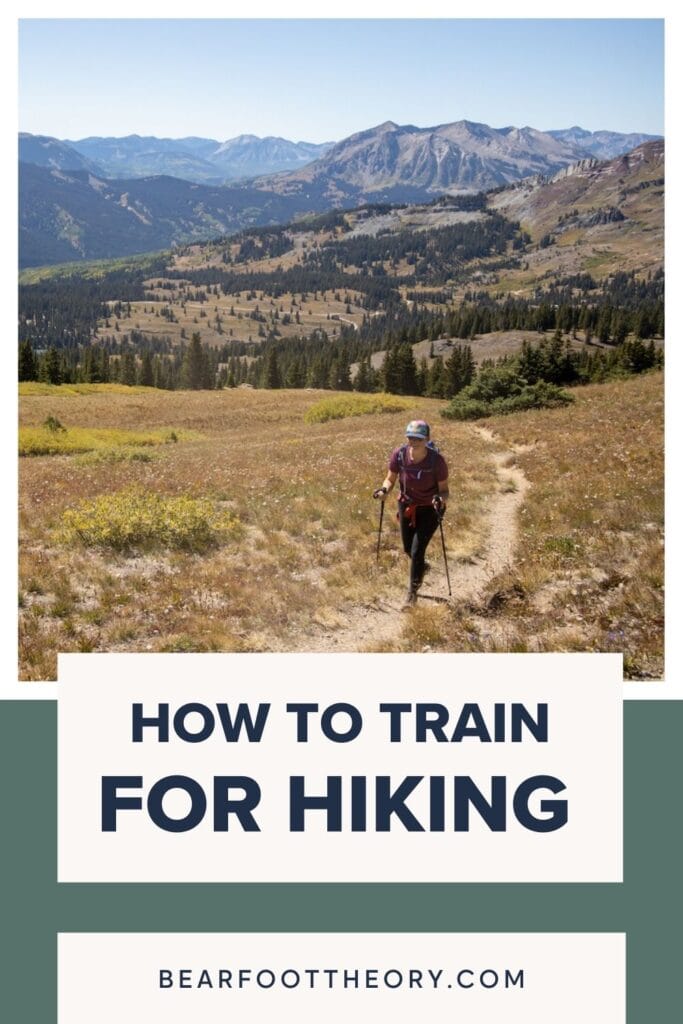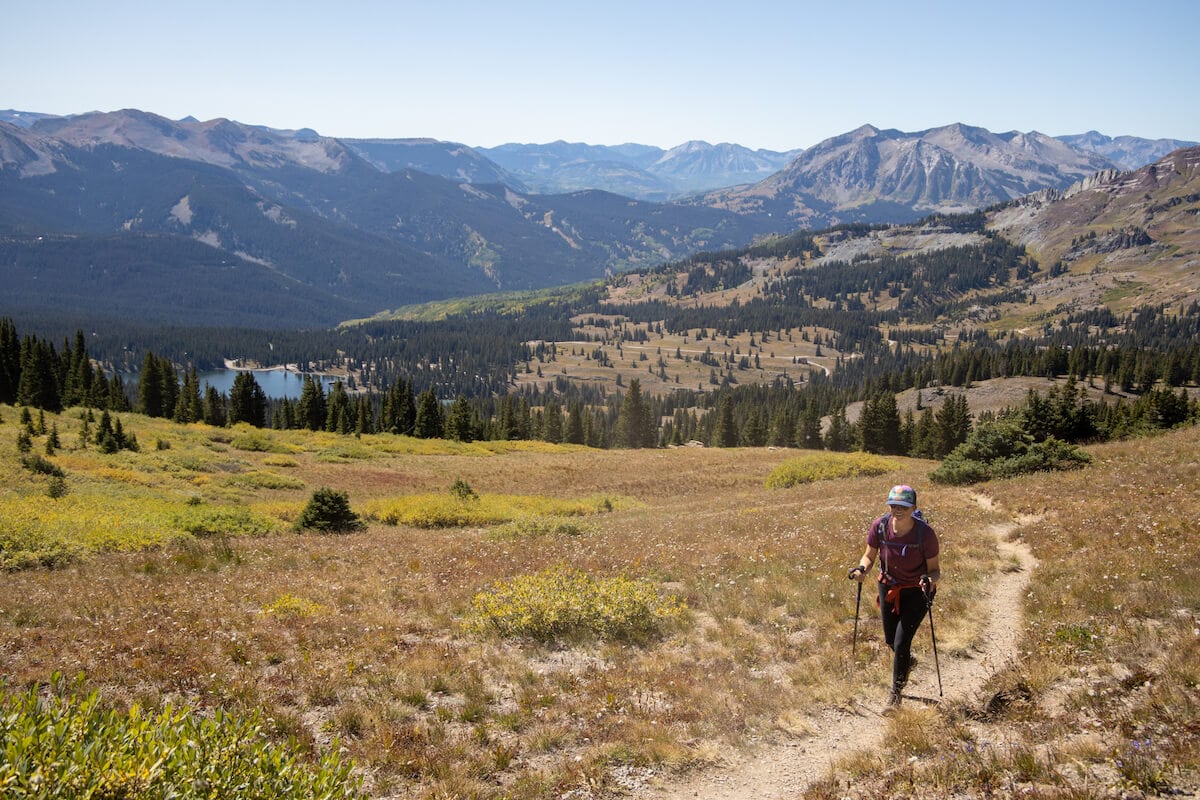Products You May Like
Hiking has many benefits: not only is it a great form of exercise, but it can also be super beneficial for your mental health. If you are new to hiking, you may be wondering whether your physical fitness will allow you to hike at all. The answer is yes! Wherever you are with your fitness journey, there are hikes of all levels out there, and with proper hiking training, you can work up to more miles and tougher hikes.
Training for hiking is super important to prevent injuries and help you gain confidence before hitting the trail. Remember, there is no “right” way to hike – whether you’re fast or slow, bagging peaks or just walking the local trails, hiking is one of the best (and easiest!) ways to enjoy the outdoors.
Here are our best tips for how to train for hiking so you can feel confident when you hit the trail.
1. Establish a Basic Stretching and Exercise Routine
To help you get a jump start before your first hike, it can be helpful to establish a stretching and exercise routine. This doesn’t have to be anything intense or complicated, but working a few gentle stretches and exercises into your day can help build up strength and length in the muscles so that you feel strong on the trail. Stretching and toning muscles can also help reduce the risk of injury.
Before you begin, always remember to listen to your body and be aware of any pain signals. This can be great training for knowing when to push yourself or turn back around on bigger and more challenging hikes. Continue to practice these stretching and strengthening exercises as you hike more to stay healthy and strong.
Below are several gentle exercises that target major hiking muscles and are great for improving overall health and fitness. What’s great is these exercises can be done anywhere using your body weight so there’s no equipment needed, although you can add in weights if you’d like.
- Lunges: Target the front of your hips and quadriceps and strengthen both the knee and ankle joints.
- Squats: Targets your quadricepts and glutes – be sure to squeeze those glutes on the way up!
- Calf Raises: A classic, easy exercise that targets your calves. Simply stand up straight and push through the balls of your feet to raise your heels until you’re standing on your tip toes.
Be sure to check out our best yoga poses for hikers blog post, which includes a ton of awesome stretches to help you stretch after your workouts and prepare for hiking.

2. Start Building Your Lung Capacity
To help prevent shortness of breath while hiking, it’s important to build up your lung capacity and improve cardiovascular health. This can be done by doing some form of cardio exercise a few times each week. This could include brisk walking, running, cycling, or swimming, or anything else that gets your heart rate up.
Here are three easy ways to build your lung capacity:
Aim to complete 3 cardio workouts each week
To improve your exercise tolerance and increase lung capacity so you can crush those long hikes, try to fit in three or more cardio workouts per week. This is the recommended amount of time that experts believe will bring a 5 to 15% increase in lung capacity. Cardio workouts can be anything from running to walking to cycling. Stuck inside due to the weather? Learn how to train for the outdoors, indoors.
Practice breathing exercises
Along with your weekly workouts, set aside time to incorporate some simple and impactful breathing exercises as well. Not only can breathwork help to increase your hiking lung capacity, but it stimulates the Parasympathetic Nervous System (PNS) which brings you feelings of peace and calm. And guess what? When the body is relaxed, you breathe easier! Try this simple breathing exercise to stay calm, focused, and energized out on the trails and in your everyday life.
Breath of Threes: Close your eyes and inhale fully (count to seven or eight) and hold your breath at the top. Slowly exhale for three seconds and hold. Exhale for another three seconds and hold. Finally, release all the air out until empty. Repeat several times.
Stretch
Make room for your breath by doing simple stretches that release tightness in your shoulders, chest, and side body. A few simple stretches will help to expand the muscles of your rib cage and the diaphragm can help cultivate a greater lung capacity for hiking.
3. Go for a Hike
Consistency is key to building up more endurance and greater lung capacity on a hike. It might sound cliché but the more you get out there and hike, the easier it will be to gain strength. Take the practices you’ve been doing at home and apply them to real-life situations when you’re out on the trail.
If you’re training for a hiking trip without easy access to trails, no worries. You can also go on a run, take a bike ride, climb stairs at your local stadium, go for a long walk (bonus points if there are hills!) or paddle across a lake. Just take your training outside as much as possible to get used to doing physical activity outside versus inside a gym.

4. Commit to a Routine
Getting started in your hiking training, or really any new healthy habit, is the hardest step in this process. We all get distracted by other things in daily life that seem more important and it can be easy to put exercise off. But remember, it’s important to take care of yourself and prioritize your health – those emails and house chores can wait. The endorphins released while hiking can provide serious stress relief, and nothing should be more important than the long-term health of your body and mind.
When it comes to committing, you need to find something that works for you. If you hate mornings, don’t sign up for a 6am boot camp. If you have a family and after work simply isn’t an option, try to squeeze in your hiking training during lunch. Set aside whatever hour you have in your schedule as “you-time” and don’t double book yourself.
Another great tip is to find an accountability buddy. Find someone to work out with you, hike with you, or swap sweaty selfies with to keep you motivated and marching toward your goals.

5. Give Your Body the Right Fuel
I switched to a plant-based diet in 2019 and I feel better now than I’ve felt in my entire adult life – leaner, lighter, and way more energetic. Since I’ve cut out meat and dairy, I don’t feel so heavy after eating a big meal, and when I’m hiking and exercising, it just feels easier. If totally cutting out meat and dairy altogether isn’t feasible for you, that’s fine. But try to cut down on your consumption and fill your body with nutritious whole foods as much as possible.

6. Be Kind to Yourself
Everyone starts somewhere. Your starting point may be walking up your neighborhood hill or it may be a 3-mile training run. Either way, it doesn’t matter. What matters is that you are out there challenging yourself. Each day of your hiking training, try pushing yourself just a little bit harder. I wasn’t always a hiker – in fact, I really struggled when I first started getting into outdoor activities. You can do this, and I promise the benefits of hiking will be worth it. Happy hiking!
I hope this blog post gives you some ideas on how to train for hiking. If you have any questions or want to share your hiking training tips, I’d love to hear from you in the comments below.

